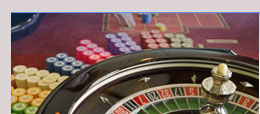We've all heard pianists who make us drool with musical jealousy when they play, using a tool box full of lighting-fast runs and clever fills that have us clamoring for more. I well recall hearing Errol Garner play "I'll Remember April" when I was about 14. I had no idea a piano could be played like that, and I was absolutely fascinated by all the interesting and exciting runs and fills he added to his improvisation of those standards. If you're anything like me, you would love to learn how to "fill up the empty spaces" with scale fragments, chords, broken chords, and so on. Techniques such as 8th note runs , 16th note runs, 32nd note runs, triplet fills, and many combinations thereof -- some so fast you can't even see which notes are being played.
Techniques such as "cascading waterfall runs", the fabulous "pro straddles", the exciting "tremolo-fired runs" and lots more. Learning how to "fill it up" with runs and fills would certainly take your piano playing to the next level. After listening to countless pianists in all genres, I compiled a list of six types of runs and fills that they often use: 1. "Cocktail" runs --The lightning fast runs used by the great "show" pianists. One hand runs, two hand runs, open-octave runs, tremolo-blasted runs, cascading waterfall runs and more. Made famous by such names as Eddy Duchin, Carman Caballero, Liberace, etc.
, but also used tastefully by many others, such as Roger Williams and many "pop" piano players. 2. Embellishments -- Mordents, inverted mordents, trills, turns, tremolos, grace notes, glissandos, etc. These are the "finesse" techniques that give your piano playing class and grace.
Virtually NO amateur piano players use these, so the pianist that learns these is putting herself or himself in a class usually reserved for professional pianists. 3. Piano tricks -- How to make your piano sound oriental, or make it sound like a drum or a music box? A bell? Latin? Country? 4. Evangelistic runs -- These are the octave runs and fillers used by the great gospel pianists of past and present such as Rudy Atwood and other evangelistic piano players.
5. Jazz & blues runs -- Using the "blues scale" up and down the keyboard, blue note-crunches, slides, etc. These runs are very useful not only in jazz and R & B, but also in "black gospel" (I hate to use that term because it sounds racist, but people use it to describe a certain type of gospel music, so I reluctantly use the term.but only in that sense of the word), fusion, and many rock-pop songs. 6.
Fillers galore -- Filling up an empty measure with a counter-melody; creating an intro; creating an ending; developing "turnarounds", plus chromatic fillers, fillers based on the Dorian and Lydian scales and other "church mode" scales used by contemporary jazz and fusion artists. It is exciting for any pianist to picture himself or herself playing those LIGHTNING FAST runs up the keyboard and back down in time for the next chord, or playing CASCADING RUNS down the keyboard for a WATERFALL of wonderful sounds, to say nothing of using mordents, inverted mordents, trills, turns, tremolos, grace notes, glissandos, fillers galore, cocktail-piano runs, plus gospel-style runs as well as "blues runs" based on the blues scale! Is it worth the effort to learn some or all of these techniques? It certainly has been for me, but every pianist will have to make that judgment for himself or herself.
For more information on piano runs & fills go to "Adding Runs & Fills & Riffs To Your Piano Playing!"





